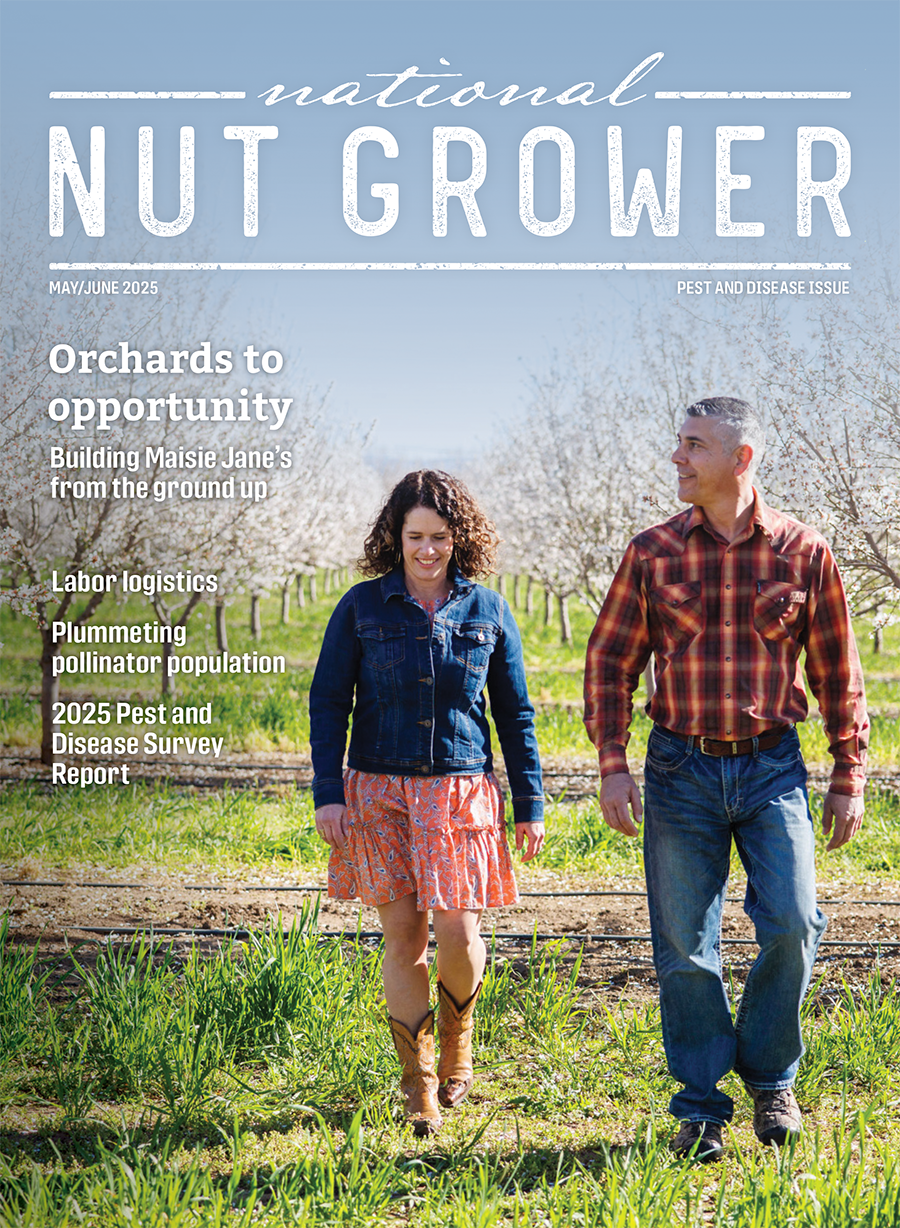Nov/Dec 2022
New varieties in pecan, almond and walnut
In the past few years, several new tree nut varieties have emerged, with breeders hoping to bring even better nuts to the growers.
Pecan
Three new pecan varieties — Pueblo, Seneca and Zuni — come from the USDA Agricultural Research Services (ARS), and each of them has a different target.
•Pueblo
Pueblo, the first of the three to be released, is an Osage and Creek cross. It’s a precocious variety that starts producing nuts early in its life cycle, and may work well for planting at higher density without crowding, benefitting from the hedging-style operation commonly used in the West and growing in popularity across the industry.
•Seneca
Made from northern material, Seneca is adapted to a region that has historically had to plant non-native trees. Warren Chatwin, research geneticist and plant breeder who worked on the new varieties for USDA, and fellow research geneticist Xinwang Wang think Seneca is the most exciting of the three new cultivars because it fills a gap in the industry. Wang also compared Seneca to Pawnee, a popular, earlier pecan variety.
“It has beautiful cream-colored kernels and high quality nuts,” said Chatwin of Seneca, which is more alternate bearing than other varieties.
Seneca emerges from dormancy late in the spring and goes dormant earlier in the fall, which helps it avoid a lot of the freezing characteristics typical of northern climates. This variety, however, should perform well throughout the pecan growing region even though it’s adapted to the northern regions and recommended there. It performed very well in Central Texas, where it was evaluated.
•Zuni
Zuni is more of an all-arounder than the other two cultivars. It has good disease resistance, but most notably it has consistent, big, well-filled kernels.
“That’s the best thing that it’s going to perform well for,” said Chatwin. The three cultivars also mark a change with USDA-ARS licensing, as these are the first varieties to be patented by the plant breeding program. Growers and nurseries can apply for a license by contacting license@usda.gov.
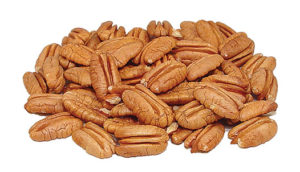
•Avalon
At University of Georgia’s (UGA) pecan breeding program, research leader Patrick Conner said that the 2016 release Avalon has gained a lot of popularity in Georgia due to its high scab resistance.
“Avalon is very productive, and it tends to be high-yielding without needing much crop tending, which is unusual in pecan cultivars,” Conner said. “It also shells out pretty well into complete halves. I would say its size and quality are good, but not super great. But the combination of the productivity and the scab resistance makes it promising.”
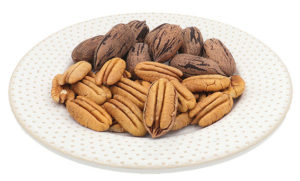
•Kalos
Last year, UGA released Kalos, which Conner said is a larger, higher quality nut than Avalon that is very productive and has a higher kernel yield. While it has good kernel yield, it doesn’t have quite the disease resistance that Avalon has. Kalos is just now being introduced to growers.
Almond
Multiple recent releases have made self-fertility the name of the game in new almond varieties. Following Independence in 2008 and Shasta in 2015, the following self-fertile varieties are also now available for growers.
•Liberty
Dave Wilson Nursery and Zaiger Genetics recently released the upright, prolifically producing Liberty variety, which harvests about two weeks later than Independence and helps to ease the seasonal harvest logjam. Liberty also has many of Independence’s favored characteristics.
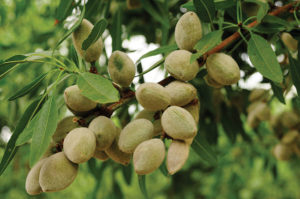
•Pyrenees
Burchell Nursery, who developed the Shasta variety in its in-house nut breeding program for 14 years, released Pyrenees in 2019 and is gaining traction among growers.
Pyrenees is a medium-sized nut that harvests about two weeks after Nonpareil, has a high crack out and was rated highly for its flavor. It has a semi-soft shell and a good seal, “making it better sealed against worms,” said Tom Burchell, owner of Burchell Nursery. “Growers who have it are seeing good production in second and third leaf.”
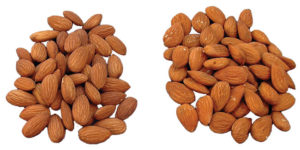
•Yorizane
More recently was the USDA-ARS release of self-fertile Yorizane, which was part of the 2014 Regional Almond Variety Trial. Yorizane mimics many of the characteristics of Nonpareil, including ripening and a comparable kernel weight and crack out. This new cultivar performed highly across all categories in a 2019 survey conducted by the Almond Board of California on 60 varieties from around the world.
“The adoption of Yorizane will eliminate the need for beehive rental and would significantly reduce production costs,” said Summaira Riaz, USDA-ARS research geneticist and breeder. “Self-compatible trees can be grown in blocks of the same variety, allowing for more efficiency at harvest time.”
Walnut
•Wolfskill
Wolfskill is the only new walnut variety released in the last five years. Developed at the University of California (UC), Davis, breeding program, which also released the marquee walnut variety Chandler in the late 1970s, the breeders of Wolfskill aimed to widen the window of a traditionally narrow harvest.
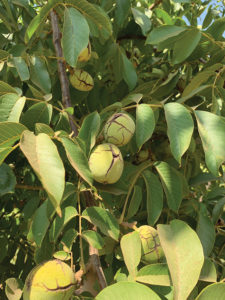
“Chandler is what most of the world produces, but there’s a problem here, which is that Chandler is a pretty late variety,” said Pat Brown, UC Davis professor and nut crop breeder. “If you’ve got a big industry with lots of capital investment and processing and handling, and everybody’s just growing this one variety that harvests at one time pretty late in the season, it’s pretty inefficient. So, at the breeding program here at UC Davis, our goal for a long time has been to widen that window to deliver varieties that are exclusively on the early side — to develop earlier harvesting varieties that maintain Chandler-level quality.”
Wolfskill physically resembles Chandler, and in tests it appears that the new cultivar might be lighter in color. While Wolfskill’s crack out isn’t quite as desirable as Chandler’s intact halves, Brown emphasized that there is a trade-off between crack out and kernel yield.
Chandler is a bit underfilled, with a kernel yield of about 50%, sometimes less. By contrast, Wolfskill is about 56% kernel.
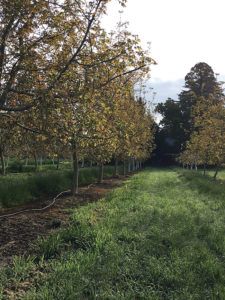
But earlier harvest means earlier leafing, which likely means an increased presence of blight. Wolfskill, however, seems to be faring well and continuing to deliver high yields with standard spraying and management.
Prior to its release, Wolfskill was tested by growers across the state of California. While data won’t be available on its regional growing success for another few years, Brown said breeders are confident in its success, stating that Wolfskill fared even better than Chandler in the trials for this year.









